Why you must visit this recreation of a lavish, long-lost treasure
By Julie Miller
Seven wonders within Getty Villa, Los Angeles
A passion project for a US oil tycoon, the Getty Villa recreates a Roman villa buried by a volcanic eruption and houses 44,000 antiquities.
1 Be transported to the past
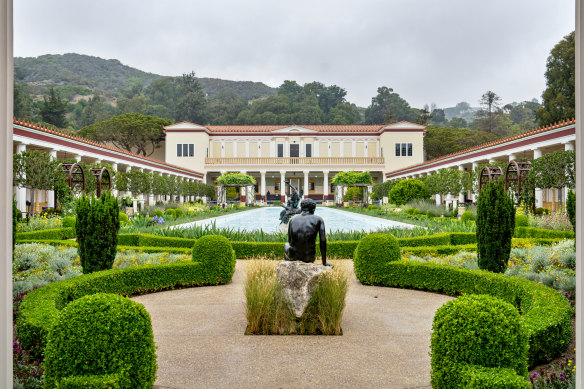
The formidable Getty Villa – its founder and funder never saw the finished project.
Billionaire J. Paul Getty found his ranch in coastal Pacific Palisades too cluttered with his extensive collection of ancient artworks, so in 1970, he commissioned a new gallery to be built further down the property – a full-scale recreation of the Villa dei Papiri, a luxurious estate once owned by Julius Caesar’s father-in-law that was buried by lava during the eruption of Mount Vesuvius in AD79. Adapting plans of the original villa drawn up by 18th-century excavators and incorporating details from other Roman houses, Getty obsessed over every detail – from trompe l’oeil murals to polygonal driveway stones replicating the roads of Pompeii – with the result an evocative time machine to ancient times. Sadly, Getty never laid eyes on his lavish creation – he moved overseas and died two years after its opening in 1974.
2 Admire the symmetry
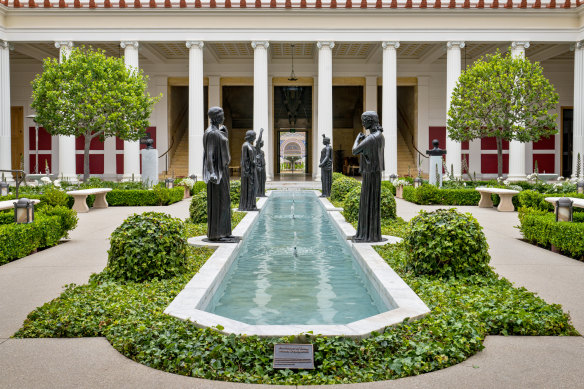
Admire the symmetry.
The Roman architect Vitruvius asserted that a structure must exhibit three attributes: strength, utility and beauty, with the latter defined by perfect proportions and symmetry. This theory is reflected in every aspect of Getty Villa’s design – from its sky-lit atrium leading to the Inner Peristyle to the 67-metre reflecting pool surrounded by colonnades in the Outer Peristyle. Even garden plantings are mirrored to perfection, while water features draw the eye to a central motif, whether a mosaic fountain or a grand statue.
3 Take an architecture tour
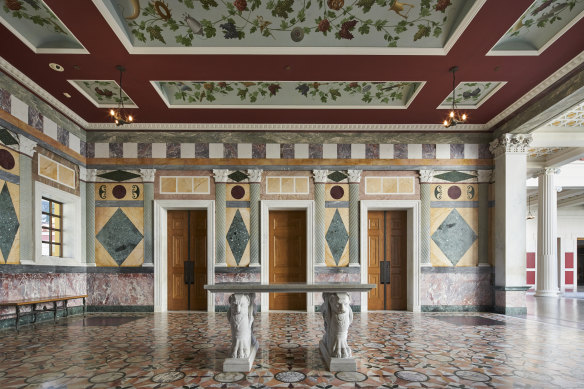
Take an architecture tour to see the detail.
To gain an appreciation of the pains Getty took to be true to his vision, take a 40-minute architecture tour led by a well-informed volunteer academic. The tour delves into Getty’s inspiration and highlights details you might miss on a self-guided visit – the intricate mosaic floors, the Corinthian flourishes atop fluted columns, or the four distinct styles of Pompeian wall painting, for instance. Other tours on offer include a garden tour, a collection highlights tour and a special exhibits tour, all offered free on a first-come-first-served basis.
4 Gaze with wonder at Hercules
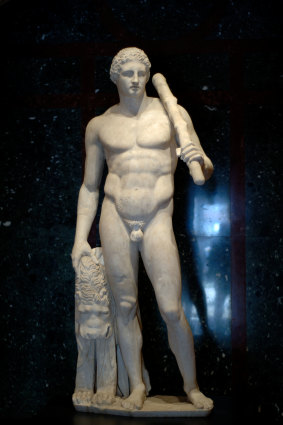
The larger than life Hercules, dating from AD125.Credit: Alamy
Getty’s most prized acquisition – and his main inspiration for building a museum dedicated to antiquities – was the larger-than-life Lansdowne Hercules, dating from AD125 and originally discovered on the site of Hadrian’s Villa in 1790. Getty purchased the statue from the estate of British aristocrat Lord Lansdowne in 1951, and it is now displayed in its own “temple” off the Inner Peristyle. At Hercules’ feet is an intricate mosaic flooring, a concentric circle of yellow and grey triangles that replicates the original pavement of Villa dei Papiri in Herculaneum.
5 Wander the grounds
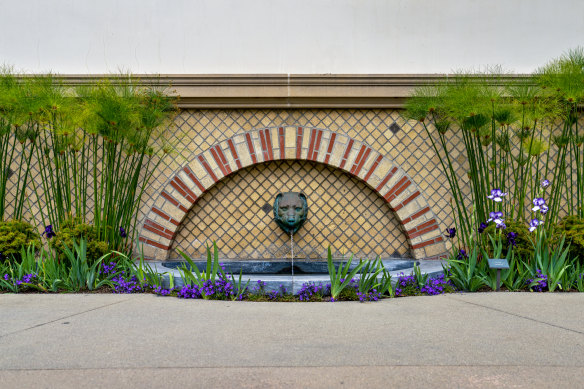
A fountain in the herb garden.
The wonder and beauty continue beyond the villa walls, with the grounds overlooking the Pacific Ocean an integral part of the museum’s design. As in ancient times, formal gardens planted with boxwood, sycamore, bay laurel and ivy offer places of contemplation and respite from the heat, while the herb garden features plants and fruit trees native to the Mediterranean region, including aromatic rows of mint, rosemary, oregano and sage. Beyond the amphitheatre, note the layers of concrete that replicate the strata of an archaeological dig – a mindful addition from a 2006 renovation that provides context to visitors from the moment they enter the site.
6 Small things matter
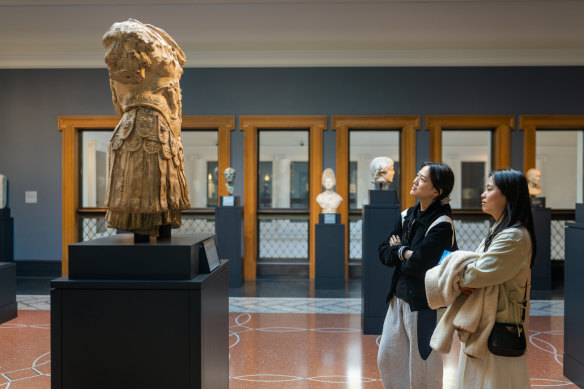
The small things matter.
While grand marble columns, alabaster windows and statues of impossible human perfection are statement pieces, take time to gaze at exquisite personal items displayed in cabinets – delicate gold Ptolemaic jewellery, hand-blown Greek and Roman glassware, and brass drinking vessels adorned with erotic images of centaurs. Also, don’t miss the display of mummy portraits from Roman Egypt, the extraordinary likenesses painted on wood and inserted into the linen wrappings of the corpses, conveying a sense of the deceased’s status in society.
7 Visit the museum store
“Exit via the gift shop” takes on new meaning at this superior museum store, featuring Getty-inspired gifts, from T-shirts and scarves adorned with the Hercules mosaic to moonstone earrings inspired by the Mummy Portrait of Isadora. This is no souvenir shop junk – even basic items such as coasters and mugs are adorned with Roman frescoes. There’s also a comprehensive collection of art history books, with a delightful range of history-inspired children’s books with titles such as Live Like a Roman and Tales of Brave and Brilliant Girls from Greek Myths.
Entry to the Getty Villa is free. See getty.edu/visit/villa/
The writer travelled courtesy of Discover Los Angeles. See discoverlosangeles.com
Sign up for the Traveller Deals newsletter
Get exclusive travel deals delivered straight to your inbox. Sign up now.